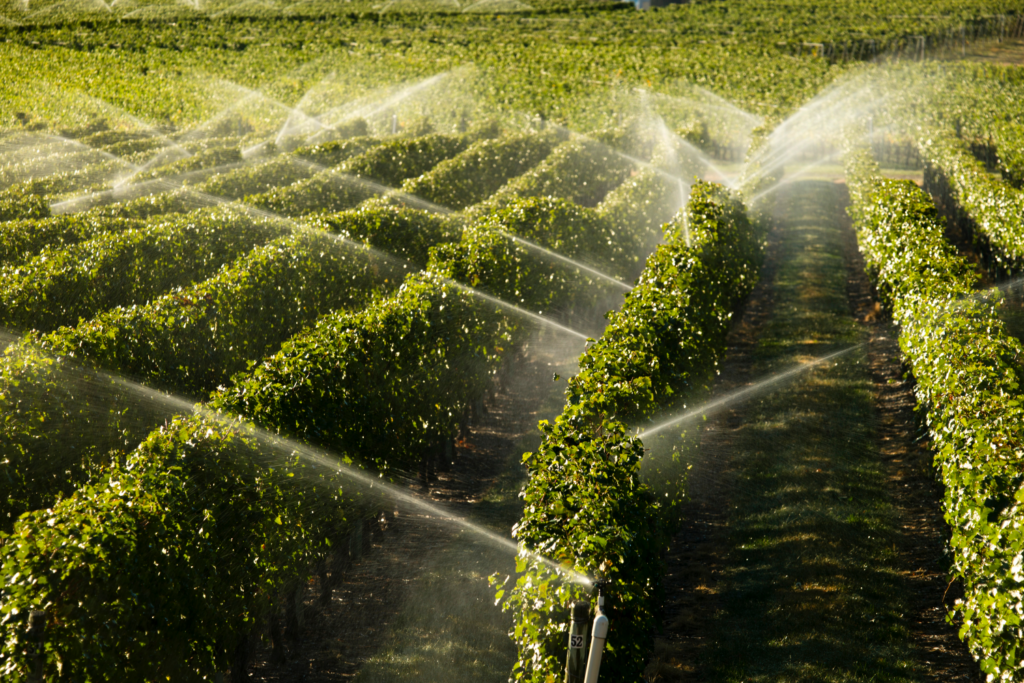Drip vs. Sprinkler: Choosing the Right Irrigation Method for Vineyards
When it comes to nurturing vineyards, one of the most critical decisions a vintner can make is selecting the appropriate vineyard irrigation method. The choice between drip and sprinkler systems can significantly impact grape quality, yield, and overall vine health.
In this guide, we'll delve into the differences between these two methods to help you determine which one suits your vineyard best.
Understanding the Basics of Vineyard Irrigation
Before we delve into the specifics of drip and sprinkler systems, let's take a moment to understand the importance of Vineyard Irrigation.
Vineyards require precise amounts of water at various growth stages to thrive. Proper irrigation not only ensures optimal grape development but also influences factors like vine root depth, nutrient uptake, and disease prevention.

Drip Irrigation: Slow and Steady Wins the Race
Drip irrigation is a method where water is delivered directly to the base of each vine through a network of tubes or pipes. This system provides a slow, steady supply of water, allowing for precise control over vineyard irrigation.
By delivering water directly to the root zone, drip systems minimise water waste and reduce the risk of disease by keeping foliage dry.
Advantages of Drip Irrigation
- Water Efficiency: Drip systems are highly efficient, delivering water directly to the roots where it's needed most.
- Precision: Vintners have precise control over vineyard irrigation, allowing them to tailor water delivery to each vine's specific needs.
- Conservation: Drip irrigation minimises water runoff and evaporation, making it an environmentally friendly choice.
Considerations for Drip Irrigation
- Initial Investment: While drip systems offer long-term savings through water efficiency, they typically require a higher upfront investment for installation.
- Maintenance: Regular maintenance is essential to ensure the proper functioning of drip emitters and prevent clogging.
Sprinkler Irrigation: Wide Coverage with Uniform Distribution
Sprinkler irrigation involves the use of overhead sprinklers to distribute water across the vineyard. This method mimics natural rainfall, providing widespread coverage to the entire vineyard.
While less precise than drip irrigation, sprinkler systems are well-suited for larger vineyards and can be more cost-effective to install.
Advantages of Sprinkler Irrigation
- Uniform Coverage: Sprinkler systems can cover large areas with ease, ensuring consistent moisture levels throughout the vineyard.
- Ease of Installation: Compared to drip systems, sprinkler installation is often quicker and requires less infrastructure.
- Frost Protection: In regions prone to frost, sprinklers can provide additional protection by creating a protective layer of ice on vines.
Considerations for Sprinkler Irrigation
- Water Distribution: While sprinklers provide wide coverage, they may not deliver water to the root zone as efficiently as drip systems.
- Foliage Wetting: Sprinklers can wet the foliage, increasing the risk of fungal diseases if not managed properly.
Choosing the Right System for Your Vineyard
When deciding between drip and sprinkler vineyard irrigation, several factors come into play. Consider the size and layout of your vineyard, your budget, water availability, and local climate conditions. Small, boutique vineyards with limited space may benefit most from drip irrigation, whereas larger operations with ample water resources might find sprinkler systems more practical.
Ultimately, the best vineyard irrigation method is one that meets your vineyard's unique needs while promoting sustainable practices and preserving water resources for future generations. By carefully weighing the advantages and considerations of drip and sprinkler systems, you can make an informed decision that enhances both grape quality and vineyard productivity.
Conclusion
The choice between drip and sprinkler irrigation methods for vineyards depends on various factors such as soil type, climate, vineyard layout, and water availability. While drip irrigation offers precise water delivery directly to the roots, conserving water and reducing weed growth, sprinkler systems provide uniform coverage across larger areas, suitable for certain soil types and climates.
Ultimately, vineyard owners should consider their specific needs and goals when selecting the right vineyard irrigation method. Whether it's maximising water efficiency, minimising labour, or optimising grape quality, both drip and sprinkler systems can be tailored to suit the unique requirements of any vineyard operation.
Comments
Post a Comment